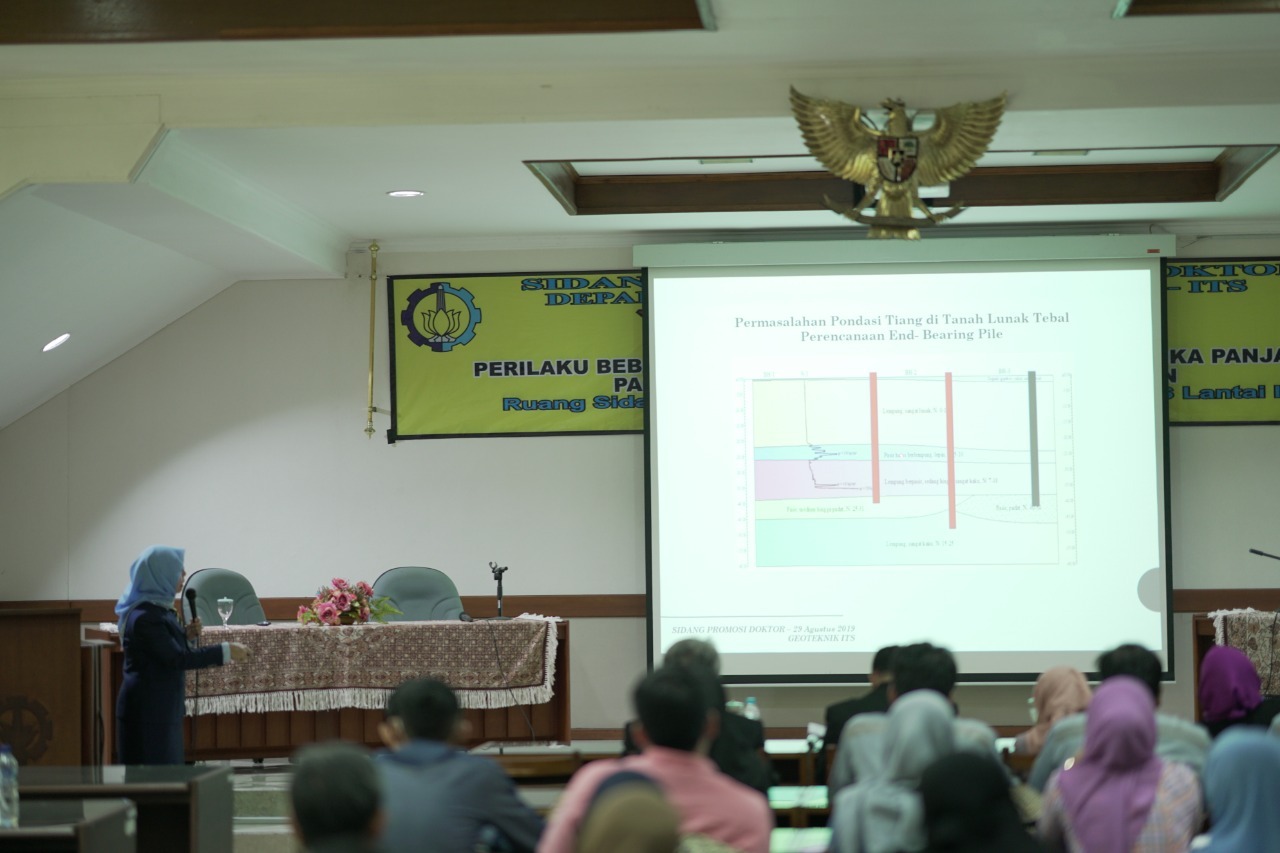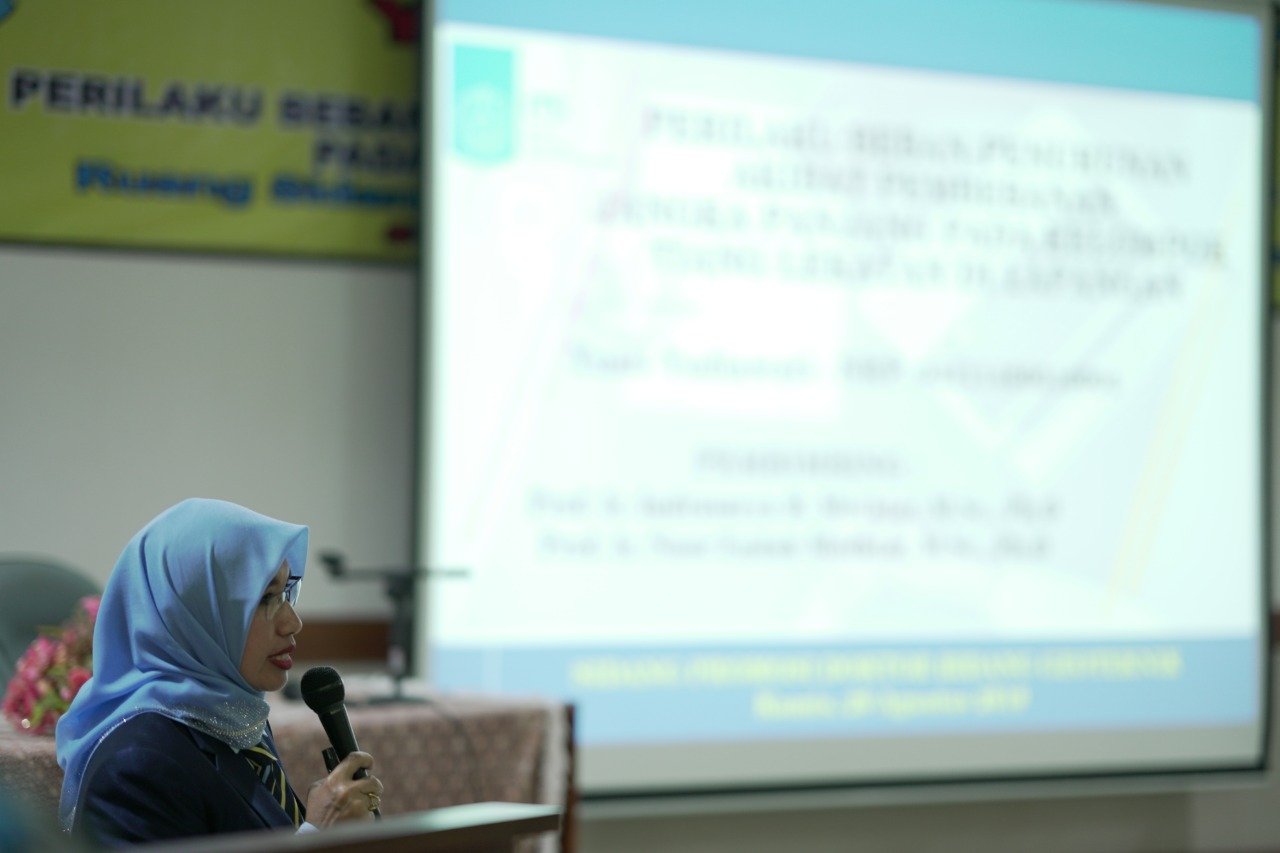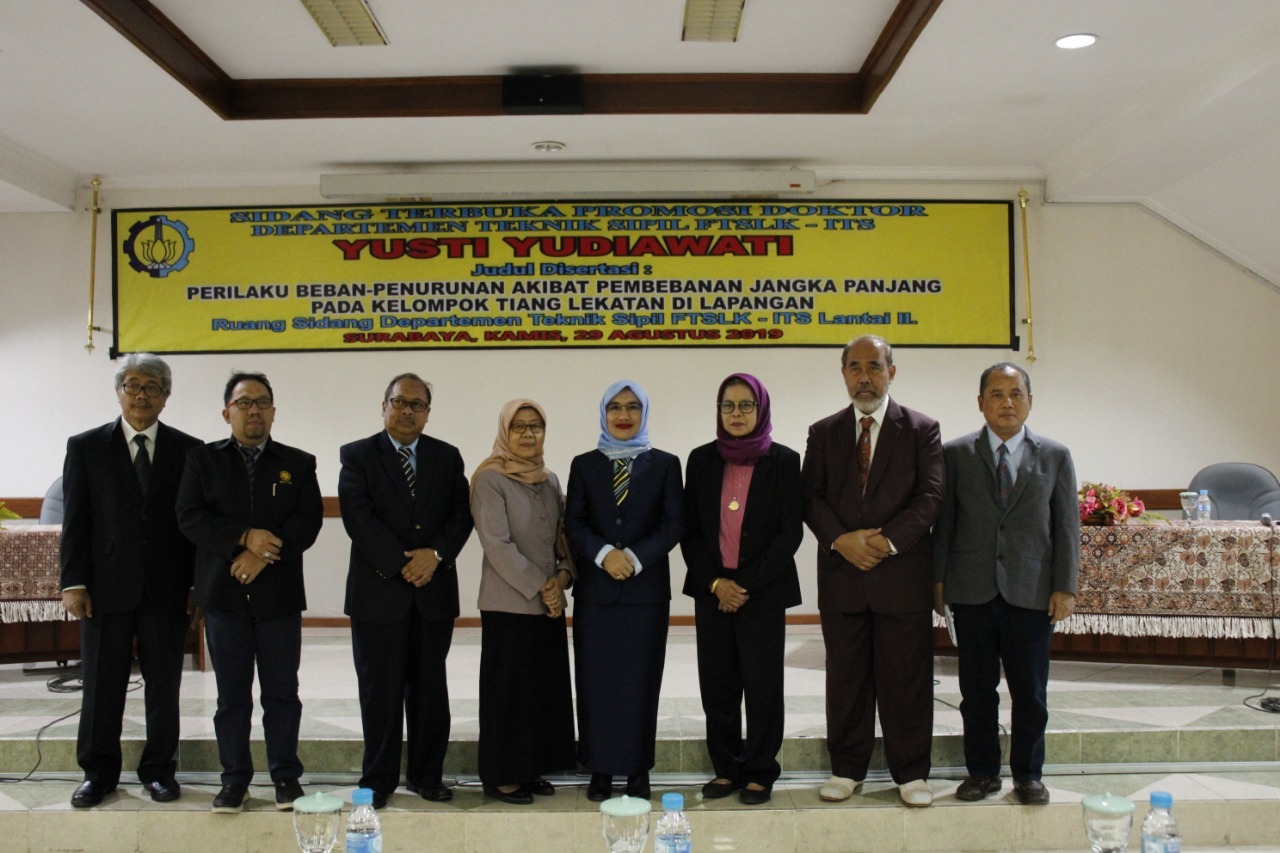ITS Doctorate Develops Building Resilience Methods in Soft Land

Yusti Yudiawati (standing) was presenting her dissertation data test results in an open session of doctoral promotion in ITS Civil Engineering
ITS Campus, ITS News – The area of soft-land in Indonesia that can cause a decline in buildings is estimated to be about 10 percent of the total land in Indonesia. For this reason, Yusti Yudiawati ST MT from Civil Engineering doctoral program of Institut Teknologi Sepuluh Nopember (ITS) developed the pole friction method which was presented at the open session of doctoral promotion in ITS civil Engineering Meeting Room, Thursday (29/8).
Yusti said the research she conducted was based on the number of sloping buildings in Banjarmasin. The condition was caused by the foundation of the building placed in soft soil. Therefore, Yusti conducted this research and testing at Lambumangkurat University, Banjarmasin. “From this research, it can be predicted the long-term behavior of decline in building poles,” Yusti explained.
The research that guided by Prof. Ir. Indrasurya B Mochtar MSc Ph.D. and Prof Ir Noor Endah Mochtar MSc Ph.D. explained that the foundations embedded in soft land have many problems. One of them is the decline in building foundations which is not the same. This decline causes damage to structural buildings. While the prediction of the magnitude of the decline in the pole is much more difficult than determining the carrying capacity of the pole. “Because the decline of the pole is determined by long-term loading,” said the ITS Civil Engineering alumni.
Yusti revealed that to deal with that problem, research is needed on the real pile. Those conditions can be done by testing the loading in the field. This method is also done by observing long-term decline that occurs at the head of the pole. “The results of long-term loading test will be evaluated against the results of short-term loading test,” said Yusti.

Yusti Yudiawati was presenting her dissertation data test results in an open session of doctoral promotion in ITS Civil Engineering
Yusti continued, this research aims to obtain the load-displacement curve from the results of the direct loading test of the single and group pile attachments. With those curves, it will know the short-term and long-term behavior. “Besides, there will also be a prediction method for short-term load displacement of single attachment pole,” said Yusti.
The curve, according to Yusti, can also be used to obtain a method of planning the foundation of an attachment pole group that may experience a decline but does not occur differential settlement. “Differential settlement is a condition of the building foundation when in uneven mode,” explained Yusti.
This research method was conducted by observing the behavior of load-displacement of attachment, single, and group piles in the field. Those behaviors can be identified by carrying out three testing programs. The programs are in the form of land investigation, ultimate pole loading testing, and long-term loading and observation testing. “The test is carried out with several variations of load and time of observation,” she said.
From the research, Yusti concluded, the decline due to short-term loading of the group pole is greater than the single pole with the axial capacity reduction of attachment group reaching 50 percent. The long-term deformation on the attachment pole resulted in a long-term decline over the allowable decline, “We also made a long-term U-order constants formulation for calculations in this research,” Yusti added.

Yusti Yudiawati (four from right) along with promoters, supervisors, and examiners
Yusti said the great benefit of this research is when constructing a new building, it can be predicted the decline. If the condition of the building is allowed to decline, then the decline in construction may be limited. If not allowed to decline, it can be designed with the TZ curve in its planning. So that the building will not go down or may decline, but does not cause the condition of the building to tilt. “This research can be developed with an earthquake load ratio so that it can be placed in the earthquake area,” Yusti explained again.
Hopefully, this research can be implemented in Indonesia and socialized, so that it can be included in the planning of the building in the soft land areas. Thus, buildings that are built on soft land can be firmly standing and slightly or not at all experiencing a decline in a very long time. “It will prevent the building from tilting in a short time so that the building materials will not be quickly damaged,” he concluded. (qin/gayatri/ITS Public Relation)
Related News
-
Supporting the Development of Material Processes, ITS Professors Utilize Biomass Waste
ITS Campus, ITS News — Innovation in material processes continues to develop to support society’s need for environmentally friendly
September 09, 2019 09:09 -
ITS Professor Ideas for Bio-Corrosion Control in Marine Structures
ITS Campus, ITS News — Coastal and offshore buildings interacting directly with seawater trigger damage, including bio-corrosion. If not
September 09, 2019 09:09 -
ITS Launches the First Marine Floating Solar Power Plant Prototype in Indonesia
ITS Campus, ITS News — Institut Teknologi Sepuluh Nopember (ITS)‘s commitment in realizing the energy transition is getting serious.
September 09, 2019 09:09 -
Targeting Champion, Bayucaraka ITS Launches Flying Robot Innovation
ITS Campus, ITS News – The Bayucaraka team at Institut Teknologi Sepuluh Nopember (ITS) has launched four new flying
September 09, 2019 09:09
